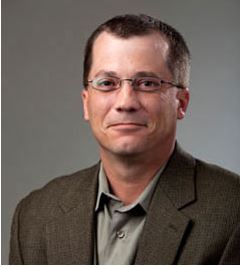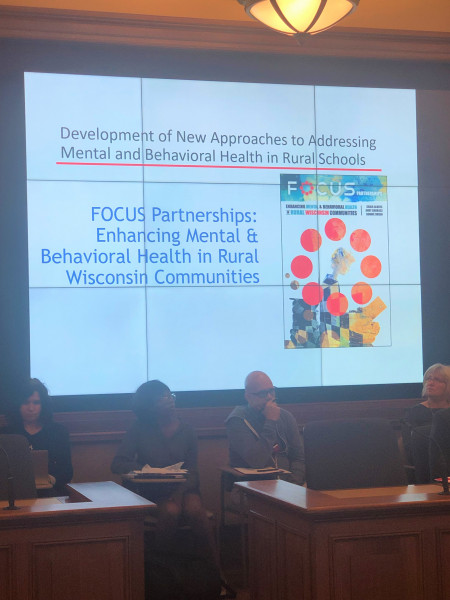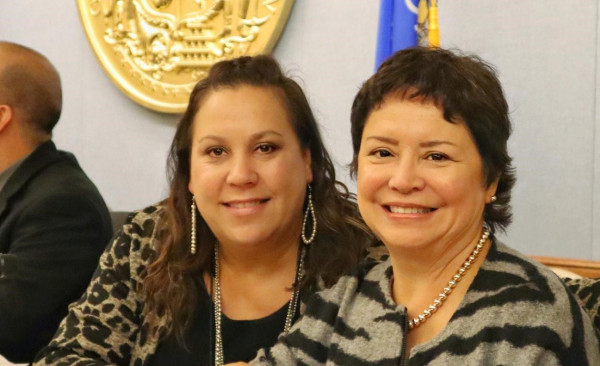Health and Education: More Schooling Equates to Healthier, Longer Lives
November 1, 2019 | By Karen Rivedal
A critical intersection exists between education and health, according to a consensus of researchers and evaluators from the University of Wisconsin‒Madison who have been working closely with rural schools, the community-school model and Native American communities in Wisconsin.
“Better educated individuals live longer, healthier lives than those with less education, and their children are more likely to thrive—even when factors like income are taken into account,” says Karen Odegaard, associate researcher at the UW Population Health Institute, which developed the County Health Rankings & Roadmaps to spotlight the relationship between education and health across the nation.
According to this extensive study, college graduates on average live nine years longer than high-school dropouts. “Higher levels of education can lead to a greater sense of control over one’s life, which is then linked to better health, healthier lifestyle decisions and fewer chronic illnesses,” it asserts.
What’s more, findings showed that more schooling is linked to better job opportunities, increased social supports and higher income, with each additional year of schooling yielding 11 percent more income annually.
Well-being challenges in rural schools.
The reverse also is true, as children and youth with unaddressed mental and behavioral health issues encounter more school challenges that lead to short- and long-term life consequences.
At the Rural Education Research and Implementation Center (RERIC), a project at the Wisconsin Center for Education Research, Craig Albers and his team are studying the self-identified needs of Wisconsin’s rural schools. “The most common, most frequently mentioned issue is mental and behavioral health,” says Albers. “If a child is not strong emotionally or doesn’t have mental-health wellness, then this has trickle-down effects to academics, and disciplinary referrals and issues. It increases the likelihood of disengagement, school drop-out.”

Craig Albers
It’s a growing problem for all schools, but districts in more isolated parts of the state show more unmet mental health need, RERIC’s research shows. Reasons include lack of access, fewer school and community resources, and more difficulty hiring, training and retaining mental health professionals.
Surveys done by RERIC show 87-90 percent of Wisconsin principals in rural areas in Wisconsin reported that students in the past 12 months who needed mental health services did not receive them.

WCER researchers focused on rural schools are using partnerships to address mental and behavioral wellbeing among students.
These challenges grow, says Albers, as students whose mental health needs are unmet age into adults. National studies reveal they are more likely to develop significant mental health problems in adulthood, be involved in the criminal justice system, and have interpersonal and relationship problems.
How health plays into community schools.
WCER researcher and evaluator Annalee Good and doctoral candidate Marlo Reeves have examined how the community school model works to coordinate health and educational opportunities for students and families.
Community schools offer an expanded array of social services and other programs based around the model’s four main pillars: integrated student supports, expanded and enriched learning time, active family and community engagement, and collaborative leadership and practices.
“One of the things that’s most promising about the community schools model is that it’s a community’s response to a community’s identification of their own needs,” says Good, co-director of WCER’s Wisconsin Evaluation Collaborative. “Often it results in communities being really innovative.”
For instance, four community schools in Madison have responded to a need for health services and family counseling by setting up a mobile community flu clinic through a partnership with Madison Metropolitan School District, Hy-Vee, United Way and Dane County Public Health. “The idea came from parents who lacked access to getting their kids vaccinated,” says Aronn Peterson, the district’s community schools manager. “Getting the flu does lead to missed school time and absenteeism for students.”
Other examples of health-related programs in the district included a six-week running and walking club at Lake View Elementary School that nearly all students took part in; and UW Health-sponsored wellness days for staff and students.
Tackling tribal health disparities.
Wisconsin Native Americans face their own unique health and education disparities, according to WCER researcher and evaluator Nicole Bowman, a Mohican/Munsee, and Carolee Dodge Francis, an associate professor at the University of Nevada and member of the Oneida Nation of Wisconsin. Both scholars have extensive experience with culturally responsive approaches to evaluation research with tribal nations.

Nicole Bowman, left, and Carolee Dodge Francis study health disparities afflicting Wisconsin Native Americans.
“Natives in Wisconsin have four times the diagnosis and mortality rate for Type-2 diabetes and on average die at age 63 compared to age 77 for whites,” says Bowman. What’s more, infant mortality rates for Native American children are 69 percent higher than white children and Native children have the highest age-adjusted suicide rate (at 2.5 deaths per100,000) across all races.
Compounding this health crisis is the fact that fewer Native children in Wisconsin complete high school—86 percent compared to 91 percent for all races—and only 13.8 percent had a bachelor’s degree or more, compared to 28.43 percent for all races, according to the Great Lakes Inter-Tribal Epidemiology Center.
“We have to do our work differently in order to have different outcomes,” Bowman says. Keys to working differently with the state’s 11 federally recognized tribes include the need for researchers to expand their on-the-ground experiential knowledge and deepen social networks to build trust among members.
“Doing focus groups is very different than having a meal with subjects,” Bowman counsels researchers. “It might seem like a simple step, but just get out there, get some fresh air, get out of your office. We have to experience life with the folks we are serving.”
It takes a village.
As Odegaard suggests, it will take the collective effort of communities, educators and researchers, like those at WCER and UW‒Madison, to work together to increase educational attainment for children and adults, better preparing the individuals and families of today and tomorrow to live longer, healthier lives.
“The quality of our homes, the safety of our neighborhoods, and our chance for a good education all have a major role to play in how long and how well we live,” she says.


